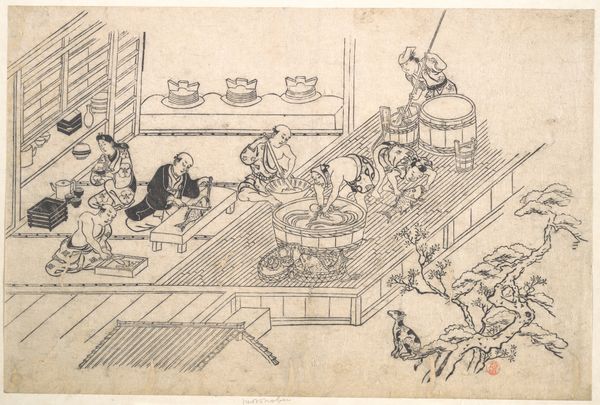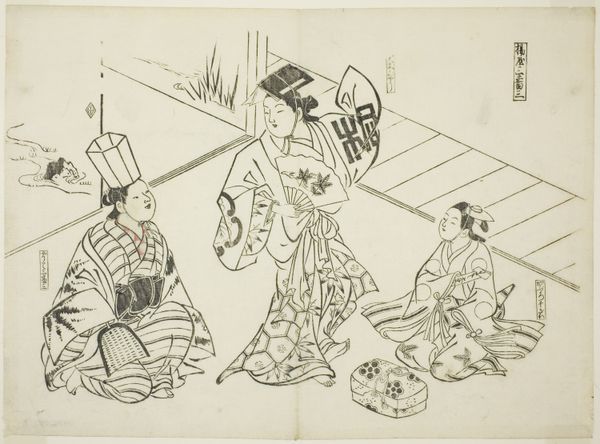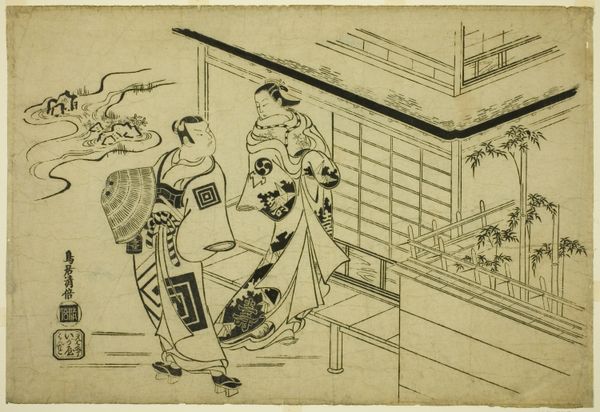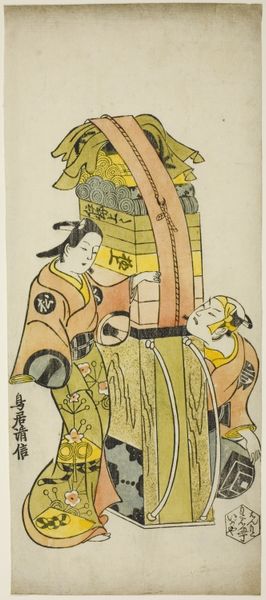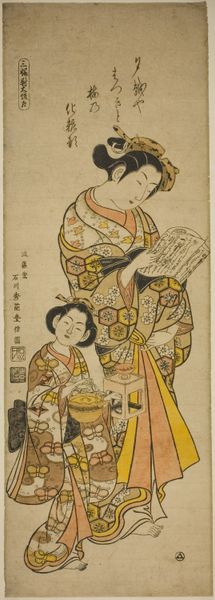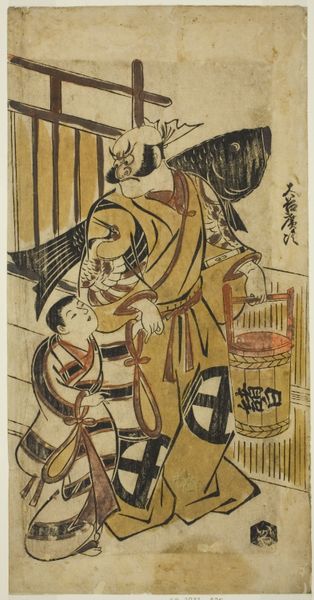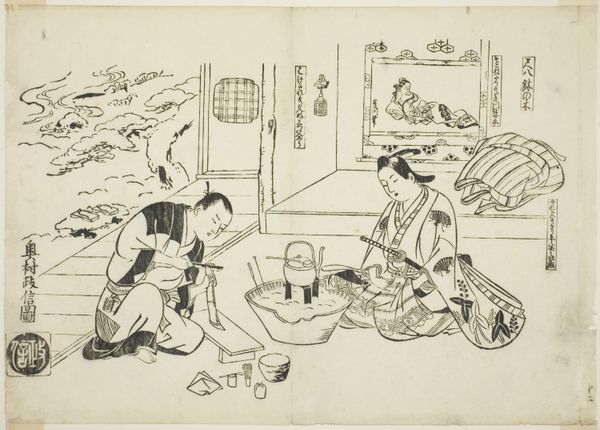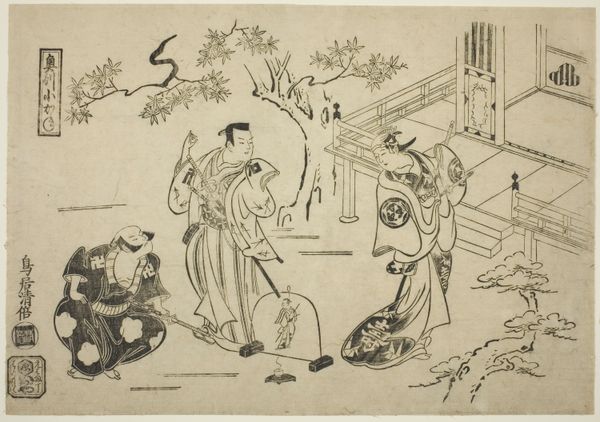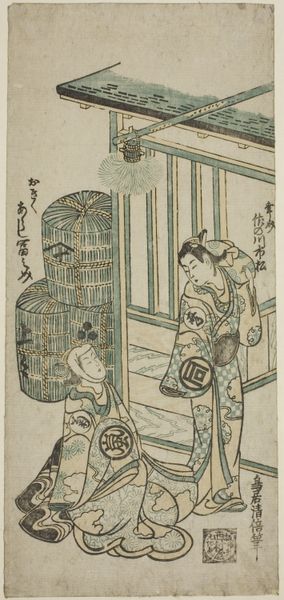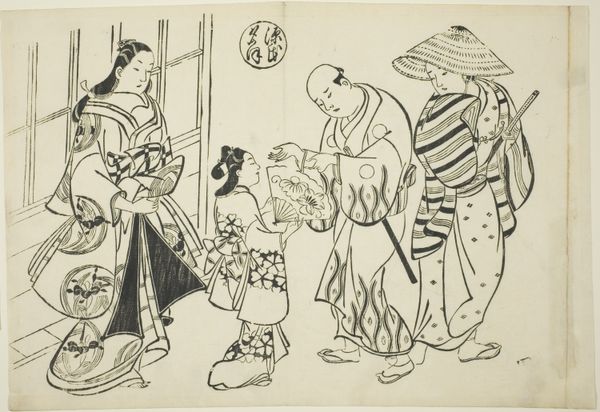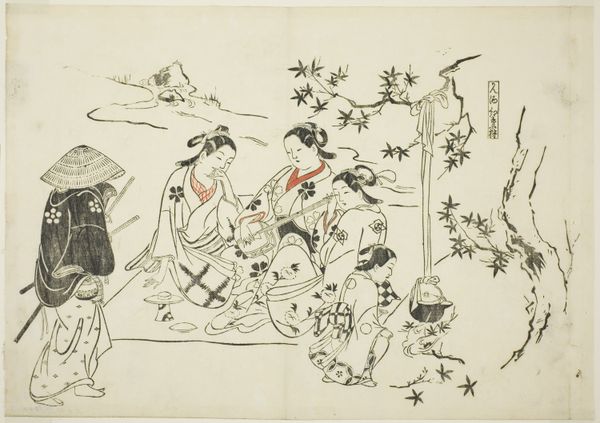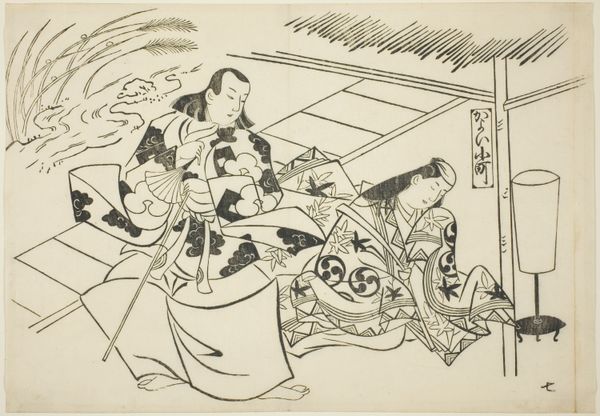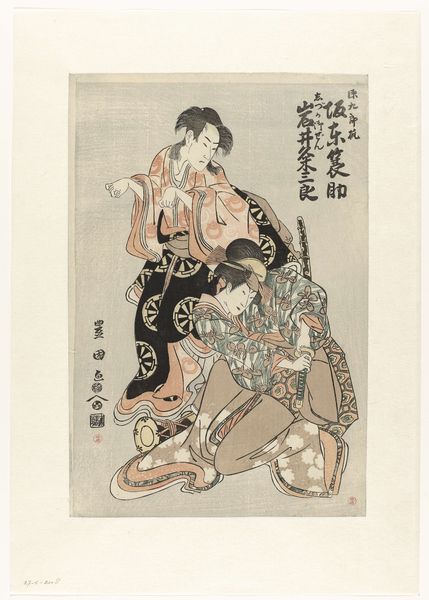
drawing, print, paper, ink
drawing
ink drawing
narrative-art
asian-art
ukiyo-e
figuration
paper
ink
Dimensions: 11 3/8 x 15 3/4 in. (28.9 x 40 cm) (image, sheet)
Copyright: Public Domain
Curator: This is Okumura Masanobu's "Three Sake Tasters," a print dating back to around 1710, currently housed here at the Minneapolis Institute of Art. Editor: It's stark. The limited ink strokes give it an almost unfinished feel, yet the composition is incredibly engaging. What can you tell us about the setting here? Curator: Masanobu was a key figure in the early development of ukiyo-e. This print reflects the popular culture of the Edo period in Japan. We see three figures gathered around what seems to be a sake barrel, set possibly near a river. It likely depicts a common social scene centered around the enjoyment of sake, indicative of the merchant class's growing influence during that time. Editor: The sake barrel is the clear focal point. It’s not just a container, it’s adorned with script—presumably branding, or at least the brewery's designation. And consider the process itself. Someone had to cultivate the rice, ferment the sake, cooper the barrel, and then, finally, it becomes part of this social ritual depicted. All of that labor contained within this image. Curator: Precisely. These ukiyo-e prints were themselves products of a burgeoning market. They democratized art, making it accessible to a wider audience. This image is less about the high-ranking samurai and nobility and more about a relatable, everyday scene. Think of it as an early form of advertising influencing social practice. Editor: And the paper! Thinking about the handmade process, the sizing, the texture...the type of paper stock influenced the quality of line, it soaked in the ink. You almost feel the artisan's hand in choosing and preparing the materials. Curator: The act of appreciating art like this becomes an exercise in understanding the culture, values, and socioeconomic context of its time. And, as you suggest, the actual tangible connection to those processes. Editor: It reminds us that art isn’t created in a vacuum, and everything carries history. This piece shows that through sake. It tells about the interconnected production that delivers us these little scenes. Curator: Indeed, a blend of social observation, cultural documentation, and… the everyday! Editor: Leaving me craving a bit of rice wine and historical examination of print processes, it's the perfect place to start!
Comments
No comments
Be the first to comment and join the conversation on the ultimate creative platform.
